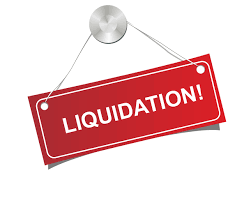Request a Strategy Call and we will get in touch with you
Ingredients of a Successful Business Sale
 Going to market when you and your business are ready to sell and market conditions are right provides the best opportunity to maximize results. Let’s look at how these three ingredients combine:
Going to market when you and your business are ready to sell and market conditions are right provides the best opportunity to maximize results. Let’s look at how these three ingredients combine:- You, the Owner
- The Business itself
- The Market
Are you and your business prepared to sell?
- What is the company’s probable selling price in today’s market?
- Are value drivers and detractors clearly identified?
- How do marketability, goodwill transferability, due diligence survivability, and deal finance-ability measure up?
- Who are the most likely buyers and what deal terms are you likely to see?
- Is cash flow being optimized at this time?
- Does management have good visibility and a clear runway?
- Are you on top of major industry and market trends?
- Will net sale proceeds be sufficient to support your (family’s) desired life style?
- How will your proceeds be reinvested?
- Are you ready for life after business? What are your personal plans?
- Are you prepared to assist in a smooth ownership transition?
- What steps can be taken now to minimize taxes and reduce risk at deal time?
- Is the management team sufficiently committed to the future success of the company?
- Are key employee incentives in place to support a sale?
- Are leases and contracts assignable and attractive to a buyer?
- Is intellectual property properly titled, protected and transferable?
- Are all books and records in good order?
Plan ahead, or plan for less
Is your company an add-on candidate?
 Most business acquisitions by private equity firms have been “add-on” deals lately.
Most business acquisitions by private equity firms have been “add-on” deals lately.Please don’t tell me liquidation is my best exit option!
 While the typical premise of value in valuing an operating business for a sale/acquisition or exit planning is as a going concern, occasionally, facts and circumstances indicate that an owner would be better off liquidating his or her business. Unfortunately, this often comes as a shock to an owner who has spent years working in and building a business with the expectation that it can be sold for enough to provide a significant nest egg for retirement.
While the typical premise of value in valuing an operating business for a sale/acquisition or exit planning is as a going concern, occasionally, facts and circumstances indicate that an owner would be better off liquidating his or her business. Unfortunately, this often comes as a shock to an owner who has spent years working in and building a business with the expectation that it can be sold for enough to provide a significant nest egg for retirement.Be Prepared!
 “Be Prepared” is the Boy Scout Motto that has served young individuals and their character development in over two hundred countries since 1907. It can also be an effective mantra for a business owner who will engage in marketing and selling a business. A well prepared business owner plays a vital role on the transaction team and helps ensure maximum value to the shareholders and a smooth transition of ownership.
“Be Prepared” is the Boy Scout Motto that has served young individuals and their character development in over two hundred countries since 1907. It can also be an effective mantra for a business owner who will engage in marketing and selling a business. A well prepared business owner plays a vital role on the transaction team and helps ensure maximum value to the shareholders and a smooth transition of ownership.The ESOP Solution
Ten Commandments of a Successful Exit
Selling a Business Using a CRT
Private Equity Fact and Fiction
 Private equity groups are active acquirers of closely-held lower middle market companies here in California. Private equity consists of individuals, families and institutional investors that make passive minority investments in partnerships that invest in, provide debt financing for, and operate private companies.
Private equity groups are active acquirers of closely-held lower middle market companies here in California. Private equity consists of individuals, families and institutional investors that make passive minority investments in partnerships that invest in, provide debt financing for, and operate private companies.
Republican presidential candidate Mitt Romney’s run for the presidency in 2012 brought sudden attention to the private equity world. Romney, who had been the founder and CEO of private equity firm Bain Capital, didn’t go far out of his way to defend the industry during the election, and this growing and increasingly important source of private capital continues to capture news headlines. Business owners may find it challenging to distinguish facts from fiction.
Is it Better to Own or Lease your Business Facility?
For some businesses, specialized building construction is required — hotels, car washes, wineries, some food processing facilities, etc. — making the business and real estate nearly inseparable, and making owning the real estate almost mandatory. However most enterprises need a more generic commercial, industrial or retail property to support business operations, and the decision to own or lease real property is more elective.
Companies that lease their facilities avoid the sizable cash investment associated with ownership. Because a landlord seeks to receive an adequate return on invested capital (debt and equity) the lessee is likely paying a higher rent than just the debt service on a real property investment. But there are numerous financial issues beyond return on investment to consider. These include the appreciation potential of the facility, how financing the facility will impact financial leverage, tax consequences and even longevity of the business itself.
Looking on the plus side of leasing from a business perspective, growing firms may be wise to invest exclusively in inventory and other working capital assets. In fact, rapidly growing companies may not be able to invest in physical facilities even if they wanted to. Similarly many firms desire the flexibility that leasing provides in terms of expansion potential and having the ability to change locations as market conditions change.
On the plus side of ownership, many firms prefer the control (of rent increases, location, specialized improvements, maintenance, being asked to leave at the expiration of the lease, reducing risk in a sale of the company, etc.) that is only provided through facility ownership. I have seen businesses devastated by losing their location prematurely resulting from landlord actions. In addition, as the mortgage is paid down, an owned facility represents a potential source of collateral in the face of financial challenges to the business. If you determine that your business has long-term viability, cash to invest and will not outgrow the facility; when you sell the company down the road, your lease to the buyer can provide retirement income, especially when the mortgage has been paid down substantially.
Generally, for small to mid-size private companies, real estate is held outside the company, in an entity owned by the same or similar group of shareholders. The holding entity purchases the real property and leases it to the operating company. Most holding companies are organized as an S-Corporation or LLC with pass-through tax treatment. The facility owner(s) enjoy the tax advantages of depreciation, avoid double taxation, and can reap the benefits of any long-term appreciation of the real property. If the rent is market-based, as it would be in an arm’s-length relationship, which it must be to avoid IRS scrutiny, the valuation impact on the operating company is non-existent.
If you are faced with the choice of owning or leasing real estate, keep in mind it may be difficult to predict the long term future of the enterprise. Understand that your eventual exit from the business could be helped or hindered by owning the real estate. Your best buyer may be a synergistic buyer that already has a facility and would consolidate facilities, leaving you with an empty building to sell or lease.
I’ve really just scratched the surface of this topic. I’m leaving many considerations untouched. There is no single answer to my initial question. Your choice to own or lease should be based on your unique business model, circumstances and objectives, and should be carefully thought out. This can be a complex business question that deserves professional M&A, banking, tax and legal guidance in order to make a final determination.
For advice on selling, acquiring of valuing a California business with or without real property, Email Bob Altieri or call him at 916-905-5706.



